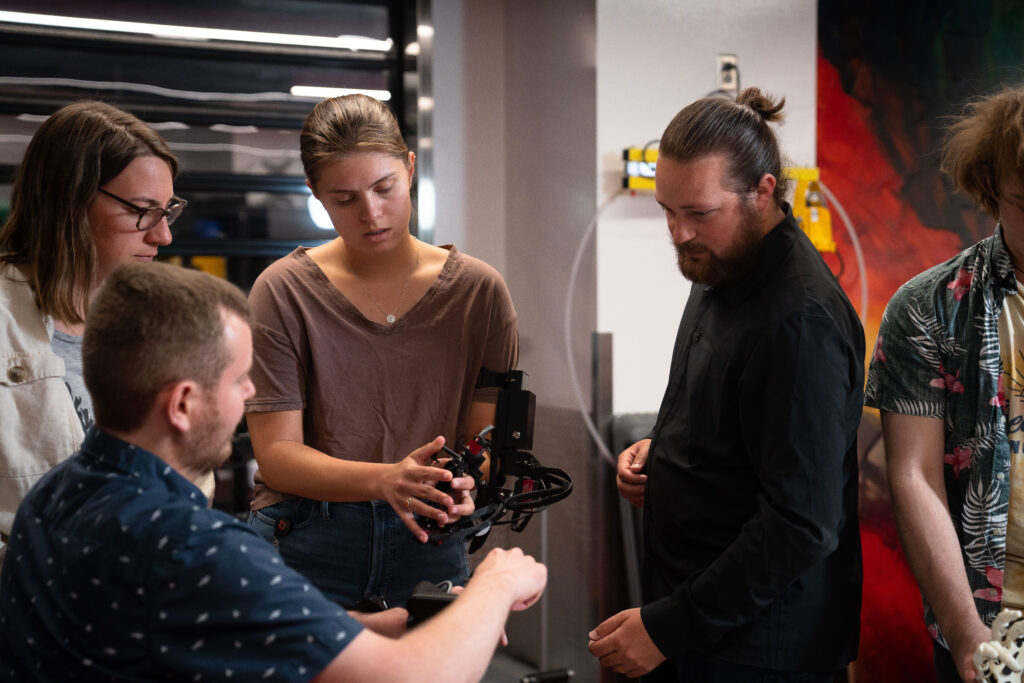
For the more than two million people in the United States who have lost a limb, prostheses can restore some function, but never really replace a missing arm or leg. U scientists have been working toward better prosthetic limbs for decades, with the development of technology that connects an artificial limb directly to the user’s nervous system so they can control its movements with their thoughts. More recently, Jacob George, PhD, director of the NeuroRobotics Lab, and colleagues have engineered the system to send signals back to the brain so the arm can transmit sensations of touch.
A state-of-the-art prosthesis called the LUKE Arm is powered by this technology. The LUKE Arm integrates with the nervous system through implanted sensors that tap into existing electrical signals from nerves and muscles. Artificial intelligence translates signals from the nerves and muscles into movement and translates physical forces on the artificial hand into a sense of touch. Sensations from the device give users the feedback they need to handle delicate objects or pick things up without looking at them. Early testers reported experiencing a sense of embodiment with the new limb.
References:

Biomimetic sensory feedback through peripheral nerve stimulation improves dexterous use of a bionic hand. George JA, Kluger DT, Davis TS, Wendelken SM, Okorokova EV, He Q, Duncan CC, Hutchinson DT, Thumser ZC, Beckler DT, Marasco PD, Bensmaia SJ, Clark GA. Sci Robot. 2019 Jul 24;4(32):eaax2352. doi: 10.1126/scirobotics.aax2352.
A portable, programmable, multichannel stimulator with high compliance voltage for noninvasive neural stimulation of motor and sensory nerves in humans. Trout MA, Harrison AT, Brinton MR, George JA. Sci Rep. 2023 Mar 1;13(1):3469. doi: 10.1038/s41598-023-30545-8.
Long-term performance of Utah slanted electrode arrays and intramuscular electromyographic leads implanted chronically in human arm nerves and muscles. George JA, Page DM, Davis TS, Duncan CC, Hutchinson DT, Rieth LW, Clark GA. J Neural Eng. 2020 Oct 31;17(5):056042. doi: 10.1088/1741-2552/abc025.
